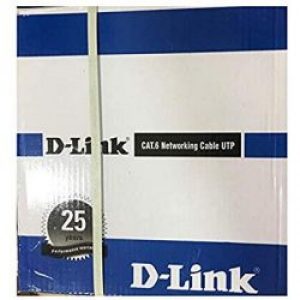Description
A Remote Cable Tester is a specialized device used to test and verify the integrity, continuity, and functionality of various types of cables, such as Ethernet cables (Cat5e, Cat6), coaxial cables, telephone lines, or any other type of electrical or data communication cables. This tool is essential for ensuring that cables are correctly wired and are functioning as expected before being deployed for use in networks, telecommunications, or audio/video installations.
Key Components:
A Remote Cable Tester typically consists of two main components:
- Main Unit (Tester):
- The main unit is the primary device used to test cables. It usually contains a display screen and a set of buttons or a dial for initiating tests.
- The tester has ports where the cable’s connectors (RJ45, RJ11, BNC, etc.) are plugged in for testing. It analyzes the wiring inside the cable and performs diagnostic checks to ensure the cable is properly wired, free of faults, and capable of transmitting data or signals.
- It may feature LED indicators or an LCD display that shows the status of each cable wire, such as whether the wires are connected correctly or if there are issues like open circuits, short circuits, or miswiring.
- Remote Unit (Receiver):
- The remote unit is a companion device that helps in testing cables that are too long or are installed in hard-to-reach areas. This device can be connected at the other end of the cable, making it easier to perform tests across extended distances.
- The remote unit is typically small, lightweight, and may feature a display or simple indicator lights to convey the status of the cable being tested.
- The remote and main units are usually connected via the cable being tested.
Functions and Testing Features:
- Wire Mapping:
- The primary function of a remote cable tester is to verify the wire map of a cable. This means checking that the individual wires inside the cable are connected to the right pins on the connectors.
- For Ethernet cables (e.g., RJ45), the tester will ensure that the wiring follows a standard (e.g., T568A or T568B) for correct communication. This feature helps in detecting common wiring issues, such as swapped or missing wires.
- Cable Continuity Test:
- This function ensures that the electrical path within the cable is continuous and free of breaks or short circuits. The tester checks each conductor for continuity, which is essential to ensure that the cable can carry signals or data without interruption.
- Signal Integrity Test:
- For more advanced remote cable testers, there may be functionality to test the signal integrity of cables (especially Ethernet cables). The tester might simulate a data signal through the cable and check whether the signal degrades or fails to reach the remote end. This helps in identifying potential issues like crosstalk or signal loss.
- Distance Measurement:
- Some remote cable testers have the ability to measure the length of the cable by detecting the time it takes for a signal to travel along the cable. This can be useful for locating faults or simply confirming the exact length of the cable.
- Miswiring/Errors Detection:
- The tester will indicate if there is any miswiring in the cable, such as incorrect pairing of wires (e.g., for Ethernet, twisted pairs may be swapped). It will typically display this through a series of error codes or a failure message.
- Multi-Functionality:
- Advanced models may allow for testing of multiple cable types, such as coaxial, phone lines, or fiber optic cables, with different adapters or accessories. Some units can even be used to test active circuits, ensuring there are no power surges or interference.
Advantages of Remote Cable Testers:
- Time-Saving: Using a remote cable tester speeds up the process of identifying and troubleshooting cable issues, especially for long or complex installations.
- Ease of Use: The tester is generally designed to be user-friendly, with clear indicators and simple operations. Many models feature intuitive interfaces and may even support audible alarms or simple visual cues like lights to indicate different test results.
- Cost-Effective: By identifying faulty cables before installation, the need for time-consuming rework and troubleshooting is minimized, saving both time and money.
- Versatility: Many remote cable testers support a wide range of cables, making them suitable for various applications from home networking to large-scale enterprise setups.
Applications:
- Network Installation: Verifying Ethernet cables during the setup of a network to ensure proper wiring and functionality.
- Telecommunications: Testing phone lines and coaxial cables in a telecom installation.
- Audio/Video Systems: Ensuring that cables used for audio and video connections are correctly wired and operational.
- Maintenance: Identifying issues in existing cables, such as degradation, short circuits, or connectivity problems.
Considerations when Choosing a Remote Cable Tester:
- Cable Compatibility: Ensure the tester supports the cable types you will be working with (e.g., Ethernet, coaxial, telephone, etc.).
- Range: For installations with long cable runs, ensure the remote unit has sufficient range for testing and that the tester is capable of covering the required distances.
- Test Functions: Depending on your needs, consider whether you need basic continuity testing or more advanced features like signal integrity checks or cable length measurement.
- Ease of Use: Look for clear indicators or screens that can help easily identify faults. A simple, intuitive design is especially helpful for quick troubleshooting.
Conclusion:
A Remote Cable Tester is an essential tool for anyone working with cables in telecommunications, networking, or installation. Its ability to test cables from a distance, verify wiring integrity, and detect faults before the cables are used can save both time and money. By ensuring that cables are correctly wired and functioning properly, a remote cable tester is invaluable for preventing installation errors, reducing downtime, and maintaining the integrity of communication systems.













